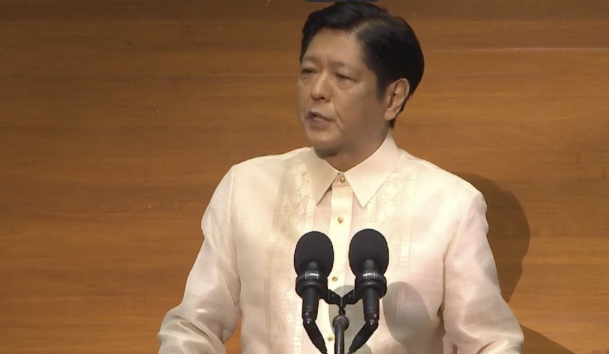MANILA -- Budget Secretary Amenah F. Pangandaman underscored that the Php5.268 trillion proposed National Budget for FY 2023 was crafted based on and in support of the Administration’s 8-point Socioeconomic Agenda during the House deliberations with the Development Budget Coordination Committee (DBCC) on August 26, 2022.
Anchored on the theme, “Agenda for Prosperity: Economic Transformation Towards Inclusivity and Sustainability,” the proposed budget aims to address the immediate and pressing concerns of all Filipinos in the near- and medium-term.
“The administration’s first full-year budget shall serve as a springboard for the economy’s full-speed recovery and meaningful structural reform,” Pangandaman said.
Strengthening the purchasing power of Filipinos
The first pillar of the proposed budget, which aims to strengthen the purchasing power of the Filipinos, covers the first three items in the 8-point agenda: food security, improved transportation, and affordable and clean energy.
To ensure food security, the Department of Agriculture’s (DA) banner programs will receive a larger share in 2023, including a doubled allocation for the National Rice Program to Php30.55 billion from this year’s Php15.77 billion.
To sustain the Administration’s continued push for infrastructure development, the Build Better More Program is allocated a total of Php1.20 trillion, equivalent to 5.0 percent of GDP, for road, rail, transport, and flood control infrastructures.
Bulk of the infrastructure budget will go to the Department of Public Works and Highways (DPWH), with Php272.87 billion which will be used to finance an efficient transport and logistics system for goods and services, and to the Department of Transportation (DOTr) with Php167.12 billion for the establishment of an efficient and reliable mass public transportation system.
To provide affordable and clean energy, the budget takes into consideration the commitment to a reliable and secure mix of energy resources through the Department of Energy’s (DOE) Renewable Energy Development Program (Php145.21 million), Energy Efficiency and Conservation Program (Php 252.35 million), and the Alternative Fuels and Technologies Program (Php78.86 million) with a total allocation of Php476 million, to be complemented by the continuation of the National Electrification Administration’s (NEA) Sitio Electrification Project with a proposed budget of Php1.63 billion.
Finally, amid the expected continuing elevated cost of fuel, the budget for the DA’s Fuel Assistance for Farmers and Fisherfolk will be doubled at Php1.00 billion. Of this amount, Php510.45 million will be for corn farmers while the remaining Php489.55 million will be for the fisherfolks. In addition, Php2.50 billion is allocated for the DOTr’s Fuel Subsidy Program for the transport sector affected by the rising fuel prices.
Reducing vulnerability, mitigating scarring from the pandemic
The second budget pillar prioritizes protection of individuals, households, and communities from the persisting effects of the pandemic, as well as future unprecedented catastrophes through the strengthening of social services and health care, as well as the safe resumption of face-to-face education.
“The government will be providing around Php206.50 billion of “ayuda” composed of the cash transfers and other subsidy programs by various agencies,” Sec. Pangandaman said.
In line with this, the Pantawid Pamilyang Pilipino Program (4Ps) of the Department of Social Welfare and Development (DSWD) will receive a higher allocation of Php115.61 billion for education and health grants, as well as rice subsidy to 4.4 million households. This is 7.3 percent higher compared to this year’s P107.67 billion, which will be used to support the improvement of data validation for the Listahanan 3 and thus ensure a better beneficiary targeting system.
Meanwhile, the Education sector still gets the highest allocation of Php852.8 billion and covers the Department of Education (DepEd), State Universities and Colleges (SUCs), Commission on Higher Education (CHED), and Technical Education and Skills Development Authority (TESDA).
Finally, to strengthen the healthcare system, the Department of Health (DOH) will be allocated a total of Php23.0 billion for its Health Facilities Enhancement Program (HFEP) to provide access to healthcare services through the construction, rehabilitation, and upgrading of health facilities and the purchase of medical equipment, among its other programs.
Enhancing bureaucratic efficiency
“In support of the Administration’s thrust for a lean, efficient, and responsive government workforce, the budget will facilitate the transformation and digitalization of the government to streamline the bureaucracy,” the Budget Chief continued.
To this end, the government will pursue investments in information and communications technology (ICT) to transform and digitalize government processes, records, and databases through e-governance.
Some Php12.47 billion of the budget will be provided for ICT and digitalization programs and projects of the government. The Department of Information and Communications Technology (DICT) will receive Php4.72 billion for its ICT Systems and Infostructure Development, Management, and Advisory Program.
Lastly, to enable accurate and timely provision of social services, the Philippine Identification System (PhilSys) will receive an allocation of Php2.06 billion.
Support to local government
The economic transformation agenda also takes into account the vital partnership with Local Government Units (LGUs), particularly through the implementation of full devolution which allows them to directly implement programs and interventions tailor-fit to the needs of their constituents.
As such, Php28.88 billion is for the Local Government Support Fund (LGSF) which is Php10.91 billion higher than the Php17.97 billion appropriated in 2022. The LGSF is on top of the Php820.27 billion National Tax Allotment (NTA) that LGUs will receive in FY 2023, following the Mandanas-Garcia Supreme Court Ruling.
“The blueprint of government spending for next year lays the foundation for the concretization of the 8-point socioeconomic agenda. Together with our partners in Congress, we hope to usher in prosperity through economic transformation towards inclusivity and sustainability,” the Budget Chief concluded. (DBM)



